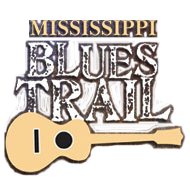Otha Turner
Otha Turner - Como
The African American fife and drum tradition in north Mississippi stretches back to the 1800s and is often noted for its similarities to African music. Its best known exponent, Otha (or Othar) Turner (c. 1908-2003), presided over annual fife and drum picnics and goat roasts on his property in nearby Gravel Springs, and performed at numerous festivals. His music was featured in several documentaries as well as in Martin Scorsese’s film Gangs of New York.
The fife and drum ensemble is most closely associated with military marches, but African American bands in North Mississippi have long used fifes and drums to provide entertainment at picnics and other social events. Many scholars believe that such groups formed in the wake of the Civil War, perhaps using discarded military instruments. Prior to the war slaves were largely forbidden from playing drums out of fear that they would use the instruments for secret communication, though African Americans did serve in military units as musicians, playing fifes, drums, and trumpets. North Mississippi fife and drum music is often described as sounding “African,” but it was not imported directly from Africa. Instead it appears that African American musicians infused the Euro-American military tradition with distinctly African polyrhythms, riff structures, and call-and-response patterns. Fife and drum bands have performed spirituals, minstrel songs, instrumental pieces such as “Shimmy She Wobble,” and versions of blues hits including the Mississippi Sheiks’ “Sitting On Top of the World” and Little Walter’s “My Babe.” While the black fife and drum tradition is identified with northern Mississippi, researchers have also documented the music in other areas, including southwestern Mississippi, western Tennessee, and west central Georgia.
In 1942 multi-instrumentalist Sid Hemphill and his band made the first recordings of Mississippi fife and drum music for Library of Congress folklorist Alan Lomax. His granddaughter, blues singer-guitarist Jessie Mae Hemphill, later played drums in local fife and drum bands. Lomax also recorded fife and drum music by brothers Ed and Lonnie Young in 1959. In the 1960s and ’70s folklorists George Mitchell, David Evans, and Bill Ferris recorded groups featuring Napolian Strickland (c. 1919-2001) on fife and Otha Turner on bass drum.
Turner, born in Rankin County around 1908—various sources suggest birth years ranging from 1903 to 1917—moved to northern Mississippi as a child together with his mother, Betty Turner. He learned to create his own fifes by using a heated metal rod to hollow out and bore a mouth hole and five finger holes into a piece of bamboo cane. Turner, who spent most of his life as a farmer, eventually became the patriarch of the regional fife and drum tradition. He recorded as leader of the Rising Star Fife and Drum Band for various American and European labels and appeared in several documentaries, including Gravel Springs Fife and Drum, Lomax’s Land Where the Blues Began, and Martin Scorsese’s Feel Like Going Home. Following his death in 2003 his granddaughter and protégé Sharde Thomas inherited leadership of his fife and drum band.
content © Mississippi Blues Commission
[ BACK TO TOP ]

